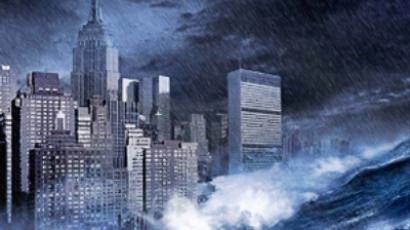'Catastrophic': Hundreds of wildfires rage in Australia amid record heat wave (VIDEO)
A heat wave that has already caused devastating fires on the Island state of Tasmania, with 100 people still missing, has now moved to mainland Australia and is reaping havoc in New South Wales, as the heat wave looks to smash records.
In some areas temperatures have shot up by as much as 20C in three hours and combined with 50 mph winds have created disastrous fire conditions.Right across Australia records have been broken by the heat wave and the Bureau of Meteorology (BoM) has been forced to add colors to its forecast charts to take account of temperatures of 50-54 degrees Celsius.Australia’s all-time record of 50.7 degrees; set in January 1960 at Oodnadatta in South Australia is likely to be smashed over the coming days. On Tuesday, in some places temperatures of 45 degrees Celsius were recorded.“The scale has just been increased today and I would anticipate it is because the forecast coming from the bureau’s model is showing temperatures in excess of 50 degrees,” David Jones , the BoM’s head of climate monitoring, told Fairfax newspapers.Australia as a whole experienced its hottest day on record on Monday, with average maximum temperatures across the entire country reaching 40.33 degrees breaking the previous record of 40.17 degrees set in 1972.More than 130 fires are already blazing away in New South Wales (NSW), where fire officials said conditions were among the worst they had ever seen for wildfires. Fires had already burnt more than 30,000 hectares of land across NSW.There are also wildfires burning in Victoria with 20 homes evacuates in Chepstowe, west of Australia’s second city Melbourne.
Land continues to burn in Tasmania where blazes last weekend destroyed 90 homes and 20,000 hectares of farm land and forest.Officials on the island are still unsure of the fate of 100 people who went missing since last week, after fires destroyed the town of Dunalley.In the current terrifying conditions, fires can become so hot that they create their own lightning storms, which can in turn ignite more fires, and ember showers can fly up to 15 miles ahead of a fire, igniting new fires in areas not yet alight. Experts warn that the intense heat being generated by the fires can kill people before the flames even reach them.The conditions hark back to Black Saturday in the state of Victoria in 2009, when 172 people were killed by fires. This time emergency services are not taking any risks and have already closed national parks, ordered tourists out of campsites and are following the movements of known arsonists.“We are at a catastrophic level and clearly in those areas leaving early is your safest option,” New South Wales Rural Fire Service Commissioner Shane Fitzsimmons said.The Australian Prime Minister, Julia Gillard, said that it is important for people to keep themselves safe and listen to local authorities and their warnings. She also stressed that the fires were being called catastrophic for a reason.The Bega Valley is one of the areas authorities are most worried about, where fast moving scrub and grass fires are threatening homes.Properties were under threat in the city of Wagga Wagga where the local highway has been closed. The Southern Ranges, the Riverina and Shoalhaven have also been given a catastrophic rating.The heat, wind and dryness – ideal conditions for wildfires – follow a record four months of dry weather, allowing mere smoldering stumps and embers from areas already burned to blow into unburnt country.However, the BoM is predicting cooler conditions to arrive across NSW by Wednesday morning.













